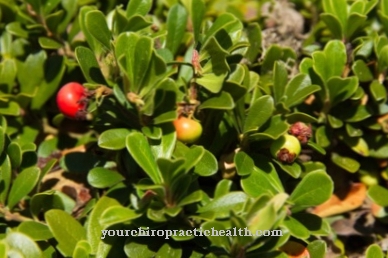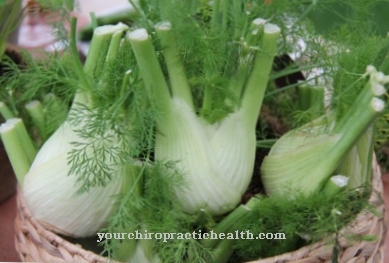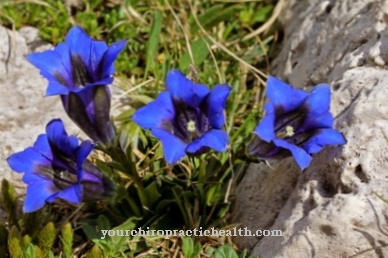Aegopodium podagraria is the Latin name for Giersch, a plant from the umbelliferae family. The perennial is fought as a weed by gardeners. Healers and cooks value them as medicinal herbs and wild vegetables.
Occurrence and cultivation of ground elder

The plant is native to all of Europe, with the exception of the Iberian Peninsula. It can also be found in the temperate climates of Asia and North America. It grows in gardens, on hedges, in bushes, parks and in damp forests, often on river banks and streams. Giersch prefers soils with sufficient groundwater and nitrogen and is therefore very common in bog areas. The perennial is up to 90 centimeters high and blooms between June and August. The egg-shaped seeds develop from the flowers in autumn.
With its subterranean runners, the perennial spreads in a very short time, covers up to three square meters in a year. The white roots are slightly poisonous due to their constituent falcarindiol. Because of its underground shoots, it can hardly be tamed and is therefore unpopular with gardeners. However, if you are interested in the healing power of the plant and its use in the kitchen, you will always have enough supplies, because the perennial spreads quickly. Since it survives mild winters with its leaves close to the ground, it is considered to be partially winter green.
Effect & application
It can be assumed that Aegopodium podagraria was already on the menu in the Stone Age. The earliest records of ground elder can only be found in the Middle Ages and the Renaissance. At that time it was used both as a medicinal and nutritional plant. Leaves and the crushed roots of the plant were placed on the affected parts of the body for sciatic pain, rheumatism and gout.
Wild vegetables and salads made from ground elder were popular at the Polish royal court. Giersch was cultivated as a useful plant in the earlier monastery and cottage gardens. Hildegard von Bingen valued him because of his vitality-giving quality. Ground grass contains a lot of vitamin C, four times as much as a lemon. Minerals such as potassium, magnesium, calcium, manganese, copper, zinc, carotene, silica and iron are also available in larger quantities.
Other ingredients are essential oils, chlorogenic acid, isoquercitrin, polyines, phenol carboxylic acids, coumarins, flavonol glycosides, resin, hyperoside and caffeic acid. Even if science has not yet been able to provide any evidence for the effectiveness of groundweed, and the plant is therefore no longer listed in the more recent pharmaceutical books, it is still taken very seriously as a medicinal plant due to its effects.
Its antispasmodic, detoxifying and blood-cleansing properties are undisputed. The relatively high potassium content affects the metabolic process in the body, flushes out water without burdening the organism's electrolysis balance. Due to the considerable content of minerals, groundfish has an alkaline effect, promotes the metabolism and deacidifies the body.
This strengthens the connective tissue. In the Middle Ages Giersch was also used against cardiovascular problems. In folk medicine, the plant is used today in the form of tea made from dried flowers and leaves, external dressings, as a bath additive, for salads and as vegetables. In homeopathy, the freshly flowering plants are processed and used against gout and rheumatism.
Importance for health, treatment & prevention
Even if medicine aside from its dehydrating effect does not attest groundwater to any scientific benefit, it still plays an important role in naturopathy. The list of indications is quite extensive. Giersch helps against cystitis, is blood-purifying, deacidifies the lymph, stimulates kidney activity and solves digestive problems. In the case of sunburn and insect bites, rubbed leaves, applied directly to the area, quickly subside the inflammation and cool the skin.
For gout and rheumatism, a combined application from inside and outside is recommended. The patients bathe in a brew made from dried yaw roots. A salad made from young elder leaves is most effective when eaten freshly prepared. The Swiss herbal priest Künzle, who at the beginning of the 20th century dealt intensively with ground grass, even recommended fresh ground grass as a shoe insert for rheumatism. For purification and detoxification, naturopaths recommend a ten-day spring cure with groundwater juice, which is pressed from fresh shoots and diluted with mineral water or buttermilk.
Giersch can also be used imaginatively in the kitchen. The young, light green shoots taste like a mixture of carrot, parsley and spinach and are suitable for fresh salads. The older leaves are more intense and combine with onions and garlic to form a tasty vegetable. Herb butter, soups, sauces, casseroles and potato dishes can be refined with groundgrass. Mixed with cream cheese or quark, a healthy spread can be made.
The grass flowers are also edible and taste sweeter than the rest of the plant. They are suitable for flavoring herbal lemonades, vinegar and oil. The styles and buds also taste great as vegetables. The leaves and the more piquant seeds can be dried, ground into powder and make an interesting seasoning for soups and sauces.
























.jpg)



